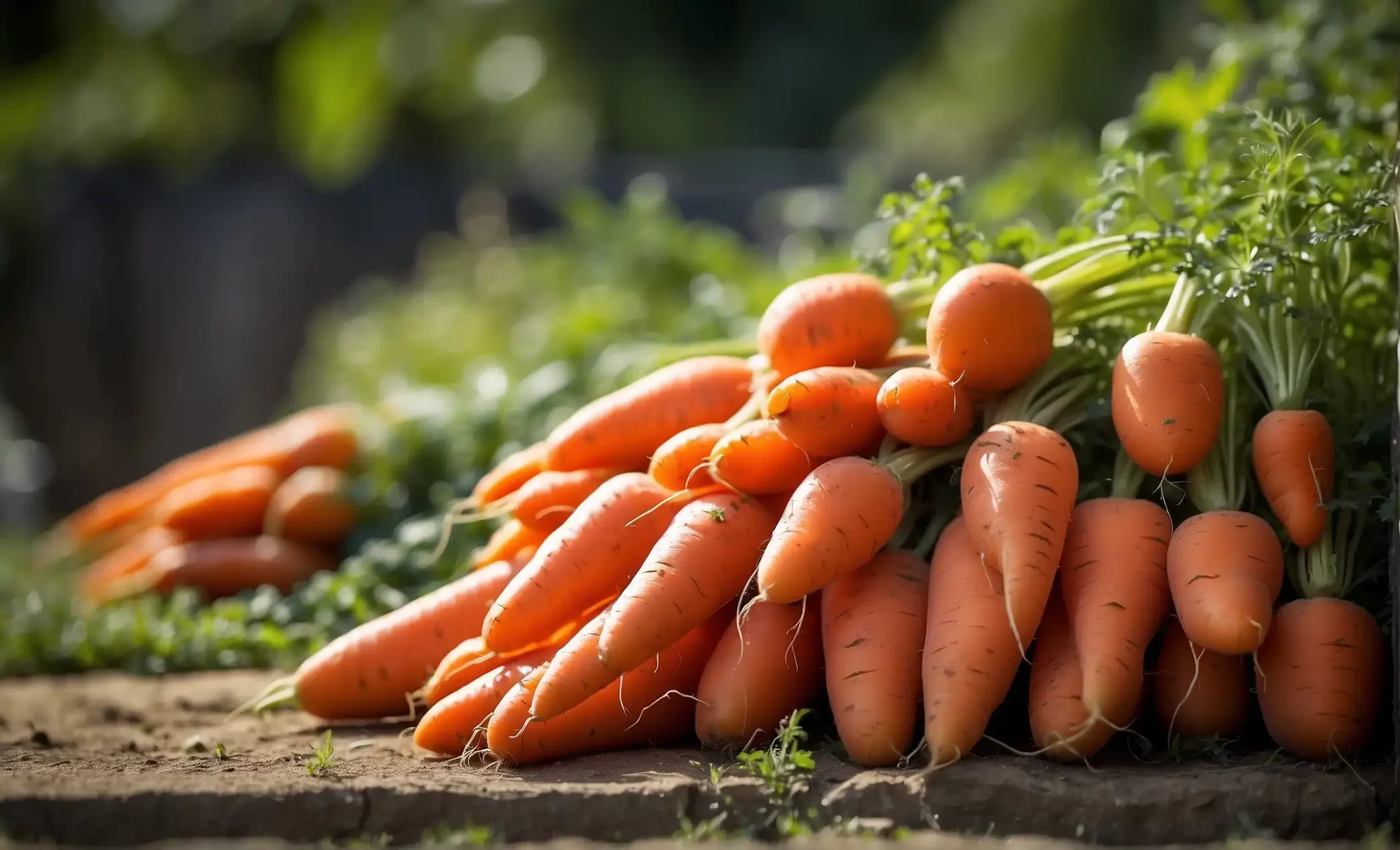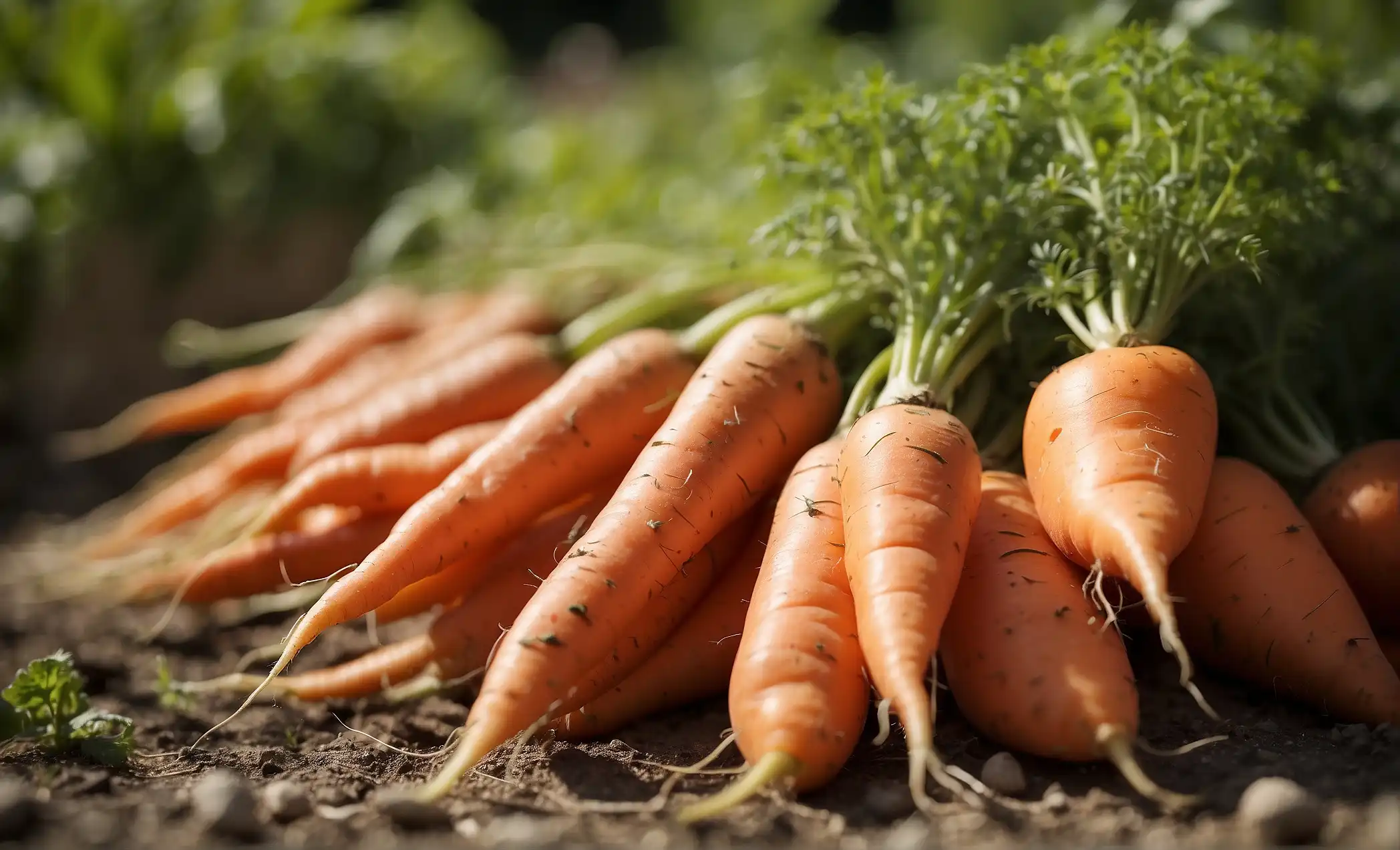Carrots can become short and fat due to dense soil or overcrowding. Nutrient imbalances also cause irregular growth.
Gardeners often aspire to grow long, slender carrots, but sometimes face a crop of chunky, abbreviated versions instead. Understanding why carrots deviate from their expected shape is essential in cultivating a successful harvest. Soil composition plays a pivotal role; if the ground is too compacted, carrot roots cannot penetrate deeply, resulting in shorter, plumper vegetables.
This root crop also needs ample space to expand, so clusters of seeds sown too closely can hinder elongated development, yielding stout roots. Additionally, the right balance of nutrients, particularly phosphorus, is vital for carrot growth. An excess or deficiency can disrupt standard root formation. Addressing these factors ensures gardeners can grow the quintessential carrot every time.
Common Carrot Growth Issues
Ever wondered why your homegrown carrots look nothing like the long, slender ones you find at the grocery store? You’re not alone. Many gardeners encounter peculiar shapes and sizes in their carrot harvest, often resulting in short and fat carrots that leave them puzzled. While they might still be delicious, understanding why carrots grow this way can help you cultivate the perfect crop next time.
Understanding Carrot Morphology
Before diving into the quirky ways of carrot development, it’s crucial to grasp the basics of carrot morphology. Carrots grow underground as the taproot of the plant Daucus carota. Ideally, they elongate and taper into a cylindrical shape. The growth of a carrot involves various plant cells elongating, dividing, and swelling to form the edible root we all enjoy. However, when this process doesn’t go as planned, carrots can become stunted or misshapen.

Factors Affecting Carrot Growth Patterns
Several factors come into play that determine a carrot’s growth pattern, and knowing these can help you tweak your gardening practices for better results.
- Soil Type: Heavy, clay-rich, or stony soils can restrict proper root expansion, causing a stunted appearance.
- Nutrients: Over-fertilization, especially with nitrogen, can lead to more foliage at the expense of root development.
- Watering: Inconsistent watering can stress the plant and lead to uneven growth.
- Density: Overcrowding carrots leads to competition for resources, encouraging wider growth as they can’t elongate properly.
- Genetics: Sometimes, the carrot variety itself is predisposed to grow short and stout.
Understanding these factors and how they interplay will guide you in nurturing carrots that are not only nourishing but also visually appealing.
Soil Conditions and Their Impact on Carrot Development
Soil Conditions and Their Impact on Carrot Development play a pivotal role in determining the size and shape of your carrots. The underground conditions where these root vegetables grow can significantly influence their form, length, and overall health. Understanding the intricacy of soil conditions is not just for the professional horticulturist. Home gardeners need to pay close attention to these factors to foster the optimal development of their carrots.
The Role of Soil Texture and Composition
Soil texture and composition are fundamental factors in carrot development. Carrots thrive in light, loose, and well-draining soil. This type of environment allows their roots to easily penetrate the ground and expand freely. The ideal soil composition for carrot growth includes a blend of sand, silt, and a bit of clay, which retains sufficient moisture yet allows excess water to drain away to prevent rot.
- Sandy soil helps in the formation of long and straight carrots.
- The presence of stones or heavy clay can cause carrots to become misshapen or stunted.
- A balanced pH level, typically between 6.0 and 7.0, can also prevent carrots from becoming too short and fat.
Soil Compaction and Its Effects on Carrot Shape
Soil compaction is another critical factor affecting carrot morphology. Tight, compacted soil makes it difficult for carrot roots to expand as they grow, resulting in shorter and plumper vegetables. Compacted soil also diminishes air circulation and reduces water infiltration, further stressing the carrot plants.
- Loosening the soil before planting can prevent compaction and promote healthy root growth.
- Regular aeration can also minimize soil density, allowing for better carrot development.
- Avoid stepping on planting areas to keep the soil structure intact and loose.
Optimizing Soil Fertility for Ideal Carrot Growth
Proper soil fertility is essential for cultivating perfect carrots. Carrots require nutrient-rich soil with an adequate supply of key minerals like potassium and phosphorus to prosper. However, too much nitrogen can lead to excessive foliage at the expense of root development.
| Nutrient | Role | Ideal Levels |
|---|---|---|
| Potassium | Improves root growth | Moderate |
| Phosphorus | Supports energy transfer and root establishment | Moderate to high |
| Nitrogen | Encourages foliage and overall growth | Low to moderate |
A soil test can be invaluable in assessing fertility levels and determining what amendments might be needed for optimal carrot growth. Additionally, incorporating organic matter like compost can improve soil structure, increase nutrient content, and encourage thriving carrot development.
Cultivation Techniques That Influence Carrot Size
Have you ever been puzzled by your garden’s produce, particularly your carrots, coming out shorter and plumper than you expected? The size and shape of carrots can be significantly influenced by a number of factors during their cultivation. Understanding how cultivation techniques can impact carrot size is essential for gardeners wanting to harvest the perfect crop of long, slender carrots. Let’s explore the key methods, from seed selection to irrigation practices, that every gardener can employ to ensure their carrots grow to their full potential.
Seed Selection and Genetic Factors
Choosing the right seeds is the first pivotal step in cultivating any crop, including carrots. Carrots come in a variety of shapes and sizes, and these characteristics are often genetically predetermined. To avoid a crop of short and fat carrots, pay close attention to the details provided on seed packets or catalogs. Look for varieties that are bred for length and slender shapes, as these are more likely to grow into the long, narrow carrots you desire.
Spacing and Crowding: How They Affect Carrot Dimensions
Proper spacing is crucial for allowing individual carrot roots to expand to their natural size. Follow these guidelines:
- Sow seeds sparingly to prevent excessive thinning later on.
- Use a seed tape or make your own to ensure even distribution and spacing.
- Thin seedlings early and adequately to avoid competition for nutrients and space.
A common mistake is overlooking the process of thinning, which can lead to crowding. Overcrowded carrots do not have the space to grow long and tend to expand in girth instead, resulting in the shorter, fatter carrots.
Irrigation Practices: Balancing Water Supply for Uniform Growth
Whether you have sandy or heavy clay soil, consistent watering can make a significant difference in the growth of your carrots. Carrots prefer a steady, moderate amount of water to develop properly. Here’s how to balance the water supply for uniform growth:
- Maintain moist soil, especially during the germination phase and as roots develop.
- Avoid extreme fluctuations in watering; both drought and overwatering can adversely affect growth.
- Consider using drip irrigation or a soaker hose to provide a consistent water supply without over-saturating the topsoil.
Irrigation practices are vital because too little water can lead to stunted growth, while too much can cause carrots to split or become misshapen. For the best outcomes, water evenly and deeply, encouraging the roots to grow down in search of moisture.
Learn more: What Does Mold Look Like on Carrots
Prevention and Mitigation Strategies
Every gardener dreams of pulling up long, slender, and perfectly shaped carrots from their beds. However, encountering short and fat carrots might leave you puzzled and eager for solutions. In the dynamic world of gardening, where various factors influence the yield, understanding Prevention and Mitigation Strategies becomes crucial. Implementing strategic approaches to soil preparation, cultivation methods, and planting timing can make all the difference. Let’s uncover how to ensure your carrots have the best chance to grow as intended.
Best Practices for Preparing Beds and Soil
Optimizing carrot growth starts from the ground up. Literally. Preparing your beds and soil properly sets the stage for carrot success:
- Deep tilling: Carrots love loose, deep soil that allows their roots to penetrate easily. Aim for at least a 12-inch depth of well-tilled earth.
- Soil texture: Sandy or loamy soils are ideal. They provide the drainage and ease of movement that carrots crave.
- Nutrient balance: Conduct a soil test and amend accordingly. Carrots prefer a soil with a pH between 6.0 and 6.8.
- Avoiding overcrowding: Space is a luxury. Ensure sufficient spacing between seeds to avoid competition for nutrients and physical space.
Adapting Cultivation Techniques for Desired Carrot Attributes
To foster the development of more elongated carrots, adapt your cultivation techniques with the following tips:
- Thinning: Once seedlings are a few inches tall, thin them out. This encourages healthier, less bulbous growth.
- Watering habits: Consistent moisture helps carrots grow quickly and evenly. Avoid the boom-and-bust cycle of watering.
- Fertilization: Too much nitrogen can promote top growth over root development. Use a balanced fertilizer to promote even growth.
When to Adjust Planting Strategies Based on Climate and Region
The climate and region can significantly affect carrot development. Adjust your planting strategies to accommodate local conditions:
| Region | Planting Season | Strategies |
|---|---|---|
| Cool climates | Early spring | Use row covers to protect from frost; focus on drainage to prevent waterlogging. |
| Warm climates | Late fall | Shade cloth can protect from intense heat; increase watering schedules to combat dry soil. |
By adjusting to the specifics of your growing environment, you can tailor your approach for better carrot growth. Remember that climate isn’t just about the temperature: it’s also about humidity, day length, and seasonal weather patterns that can impact growth.
Learn also: Why are Korean Carrots So Big
Conclusion
Understanding the reasons behind your carrots appearing shorter and plumper can greatly aid in cultivating the ideal crop. Factors like soil conditions, nutrition, and seed spacing play pivotal roles. Embrace these insights for a fruitful harvest next season, and watch your garden thrive with well-shaped carrots.
Let’s keep growing together! Farm Pioneer‘s Carrots section is your garden of wisdom for all things carrot related.
